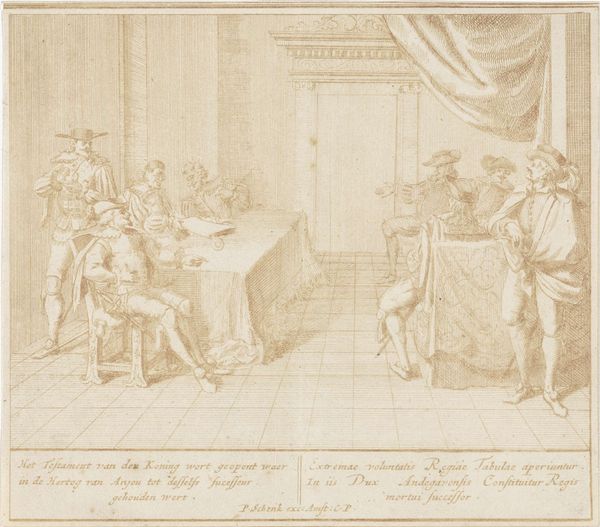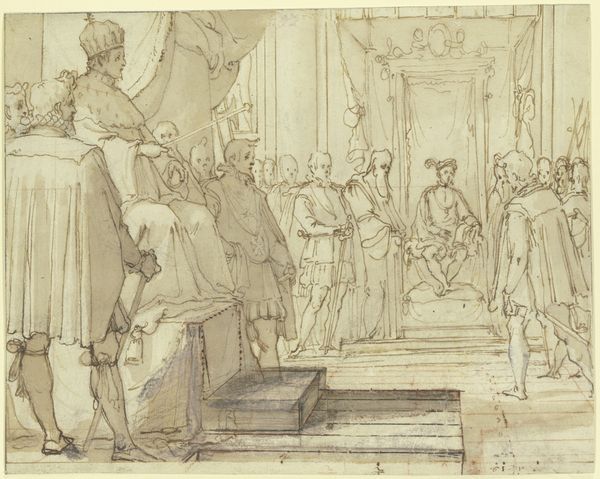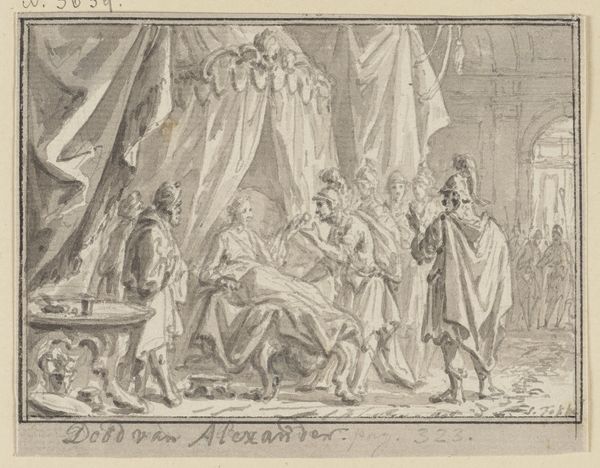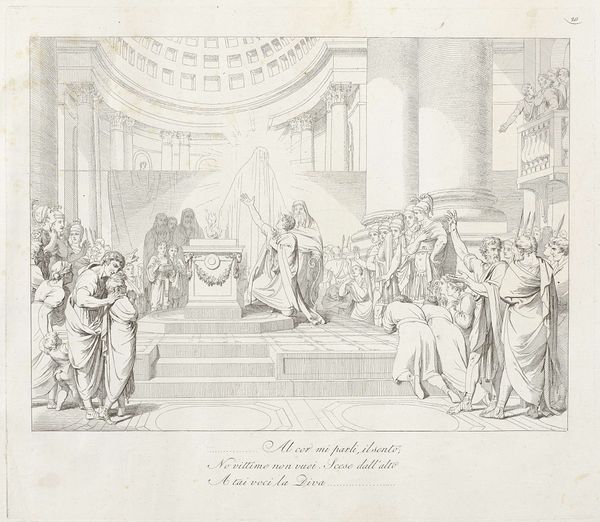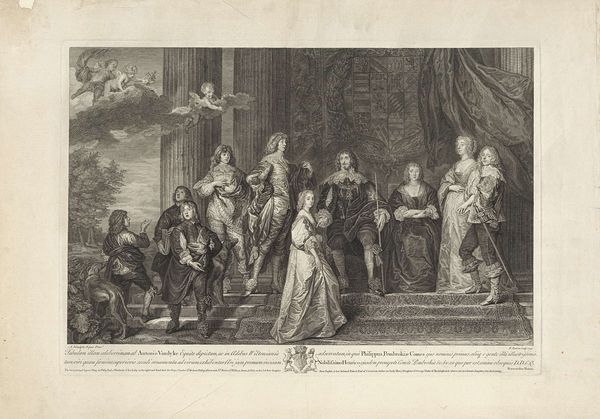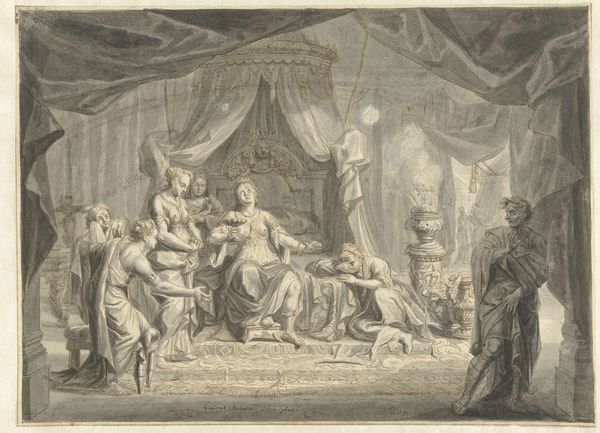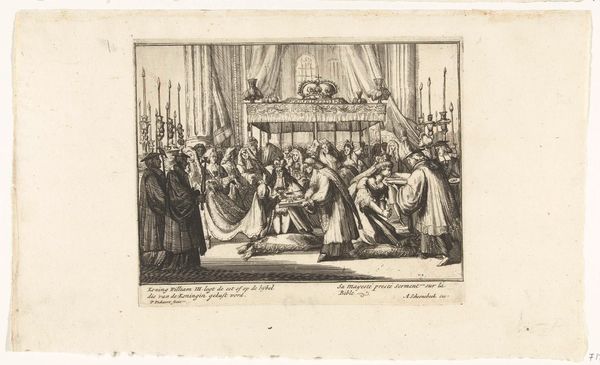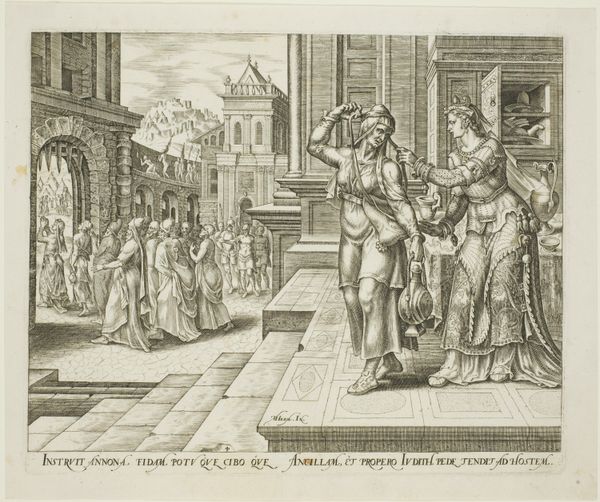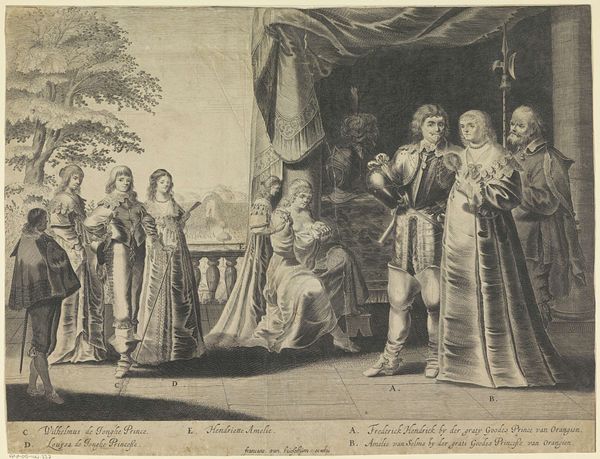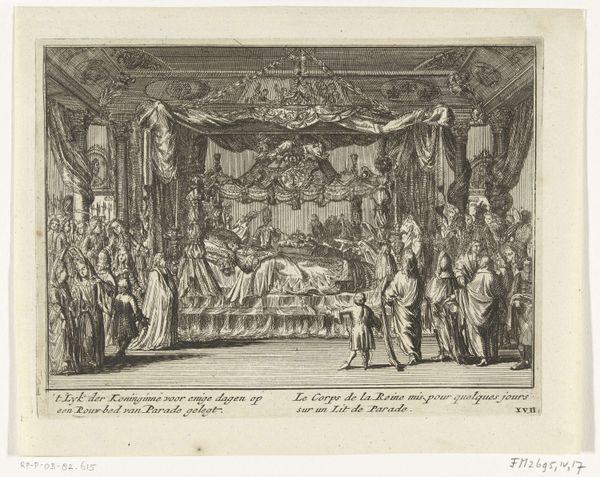
print, engraving
#
portrait
#
baroque
# print
#
history-painting
#
engraving
Dimensions: height 160 mm, width 183 mm
Copyright: Rijks Museum: Open Domain
Curator: This print, dating from 1706 to 1727, depicts "The Death of King Charles II of Spain, 1700". It's currently housed at the Rijksmuseum. Pieter Schenk is the artist credited with its creation using the engraving technique. Editor: My first impression is that it's a scene of immense stillness, but also of intense observation. Everyone seems frozen in a moment of sorrow or consideration around this deathbed. Curator: Absolutely. Consider the composition: the strong horizontals of the architecture and bed, offset by the verticality of the figures, creating a sense of restrained drama. Schenk has meticulously captured the moment through the use of line. Editor: And what a moment! This engraving highlights the culmination of centuries of Habsburg rule and its consequences for Spanish society and its colonies. Charles II, notorious for his health problems and failure to produce an heir, symbolized the waning power of Spain. Curator: The engraving style itself speaks volumes. It emphasizes clarity and detail—look closely at the figures' robes and expressions—common characteristics of Baroque prints used to convey significant historical moments. The fineness of the lines, the careful modeling of light and shadow, contribute to a somber yet dignified mood. Editor: Exactly, but is that dignity merely masking underlying turmoil? Think of the power vacuum this death created—the War of the Spanish Succession! This image is less a neutral recording and more a highly politicized representation of loss. Curator: An interesting point. However, viewed formalistically, it's Schenk's use of perspective that draws us in and frames the event—leading the eye inexorably to the still figure of the King, crowned by that rather ornate canopy and emblem, thereby heightening the visual impact. Editor: I find myself reflecting on the cost to individuals within the Royal Court, too, on those impacted most directly by inherited trauma and succession narratives like we see represented in the faces portrayed here. I also wonder what it meant to disseminate images like this in the public domain at that time? What narratives were shaped through the reach of printing and its connection to broader geopolitical anxieties? Curator: I agree that this historical context is significant, but I remain intrigued by how Schenk masterfully uses formal devices—light, line, composition—to convey drama within constraint, capturing not just death, but perhaps a whole epoch in decline. Editor: For me, Schenk’s engraving presents the death of Charles II as a potent reminder of power's fragility and its profound repercussions—personally and for those caught in broader systems of hierarchy. A complex web we are only beginning to disentangle even today.
Comments
No comments
Be the first to comment and join the conversation on the ultimate creative platform.
